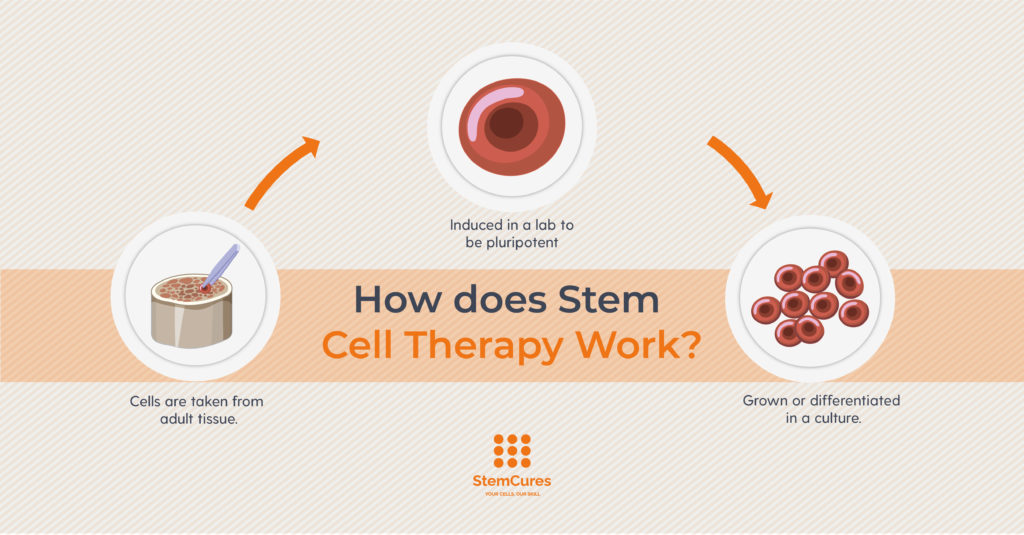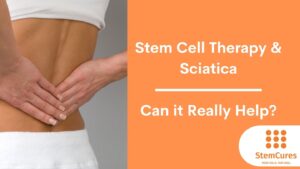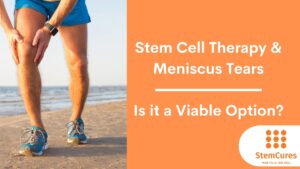Adipose vs Bone Marrow Stem Cells
Stem cells have become a promising avenue in regenerative medicine, and their potential applications in treating various medical conditions have been extensively researched over the past few decades. Adipose stem cells (ASCs) and bone marrow stem cells (BMSCs) are two of the most commonly used stem cell sources in regenerative medicine. In this comprehensive guide, we will take a look at the differences between adipose vs bone marrow stem cells.
First off, what are stem cells, and why are they important?

What are stem cells?
Stem cells are undifferentiated cells that have the unique ability to differentiate into various cell types in the body. These cells play a crucial role in regenerative medicine, as they have the potential to regenerate damaged or diseased tissues.
Where do stem cells come from?
Stem cells can be obtained from various sources, including bone marrow, adipose tissue, and embryonic tissue.
The promising potential of stem cell research
Stem cells have shown significant potential in treating various medical conditions, including orthopedic conditions, cardiovascular diseases, and neurological disorders. As stem cell research continues to evolve, there are several opportunities for future research and development, with the potential to revolutionize the field of regenerative medicine.
A Breakdown of Adipose vs Bone Marrow Stem Cells
Adipose Stem Cells
What are Adipose stem cells?
Adipose stem cells are derived from adipose tissue or fat. They are multipotent, which means that they have the ability to differentiate into various cell types such as adipocytes, osteocytes, chondrocytes, myocytes, and neurons. The abundance of adipose tissue in the body makes it a readily available source for stem cells.
Adipose stem cell extraction
ASCs are typically extracted from adipose tissue through a process called liposuction. This process involves the removal of fat from a patient’s body, followed by the isolation of the stem cells from the fat tissue. ASCs have several advantages, such as a higher yield of stem cells per unit of tissue, and the ability to be obtained through minimally invasive techniques. However, the differentiation potential of ASCs is relatively lower than that of BMSCs.
Use cases for Adipose stem cells
ASCs have shown potential for treating various medical conditions, including orthopedic conditions, cardiovascular diseases, and neurological disorders. In orthopedic applications, ASCs have been used for treating osteoarthritis, bone defects, and spinal cord injuries. In cardiovascular applications, ASCs have been used for treating heart attacks, peripheral arterial disease, and chronic heart failure. In neurological applications, ASCs have shown potential for treating Alzheimer’s disease, Parkinson’s disease, and traumatic brain injuries. Several clinical trials are currently underway to further explore the potential of ASCs in regenerative medicine.
Bone Marrow Stem Cells
What are Bone Marrow stem cells?
Bone marrow stem cells are derived from bone marrow, the spongy tissue found in the bones. BMSCs are multipotent, and they have the ability to differentiate into various cell types such as osteoblasts, chondrocytes, myocytes, and adipocytes.
Bone Marrow stem cell extraction
BMSCs are typically extracted from bone marrow through a process called bone marrow aspiration, which involves the removal of bone marrow from the patient’s hip bone.
Advantages and Disadvantages of BMSC’s
BMSCs have several advantages, such as a higher differentiation potential than ASCs and a higher concentration of stem cells per unit of tissue. However, the extraction process is invasive and requires general anesthesia.
Use cases for Bone Marrow stem cells
BMSCs have shown potential for treating various medical conditions, including orthopedic conditions, cardiovascular diseases, and neurological disorders. In orthopedic applications, BMSCs have been used for treating bone fractures, cartilage defects, and spinal cord injuries. In cardiovascular applications, BMSCs have been used for treating heart attacks, peripheral arterial disease, and chronic heart failure. In neurological applications, BMSCs have shown potential for treating Alzheimer’s disease, Parkinson’s disease, and traumatic brain injuries.
Choosing Adipose vs Bone Marrow Stem Cells
The choice between ASCs and BMSCs for a particular medical application depends on several factors, such as the differentiation potential, effectiveness, and safety of the stem cells. BMSCs have a higher differentiation potential than ASCs, which makes them more suitable for applications that require the regeneration of complex tissues such as bone and cartilage. However, ASCs have a higher yield of stem cells per unit of tissue and can be obtained through minimally invasive techniques, which makes them more suitable for applications that require a large number of stem cells.
What are the advantages and disadvantages of using adipose vs bone marrow stem cells?
Adipose stem cells have a higher yield of stem cells per unit of tissue and can be obtained through minimally invasive techniques, but their differentiation potential is lower than that of bone marrow stem cells. Bone marrow stem cells have a higher differentiation potential, but their extraction process is more invasive and requires general anesthesia.
Adipose vs Bone Marrow Stem Cells: Which is Right for You?
In some cases, the choice between ASCs and BMSCs may depend on the specific medical condition being treated. For example, ASCs may be more suitable for treating soft tissue injuries such as muscle tears, while BMSCs may be more suitable for treating bone fractures and cartilage defects.
Applications of Adipose vs Bone Marrow Stem Cells
Medical Applications
Adipose and bone marrow stem cells have shown potential in various medical applications. In orthopedic applications, stem cells can be used for treating bone and cartilage defects, spinal cord injuries, and osteoarthritis. In cardiovascular applications, stem cells can be used for treating heart attacks, peripheral arterial disease, and chronic heart failure. In neurological applications, stem cells can be used for treating Alzheimer’s disease, Parkinson’s disease, and traumatic brain injuries.
Orthopedic Applications
Stem cells have shown significant potential in orthopedic applications, particularly in the regeneration of bone and cartilage. In bone regeneration, stem cells can differentiate into osteoblasts, the cells responsible for bone formation. The use of stem cells has been particularly promising in treating bone fractures and bone defects, which are often difficult to treat using conventional methods.
In cartilage regeneration, stem cells can differentiate into chondrocytes, the cells responsible for cartilage formation. The use of stem cells has been particularly promising in treating cartilage defects and osteoarthritis, which are often associated with significant pain and disability.
In addition to bone and cartilage regeneration, stem cells have also been investigated for their potential in treating spinal cord injuries. Stem cells can differentiate into various neural cell types, including neurons and glial cells, which are crucial in the regeneration of the damaged spinal cord tissue. Clinical trials have shown promising results in using stem cells for treating spinal cord injuries, with improvements in motor function and sensory perception observed in some patients.
Cardiovascular Applications
Treating Damaged Heart Tissue
Stem cells have shown potential in cardiovascular applications, particularly in the regeneration of damaged heart tissue. In heart attacks, for example, stem cells can differentiate into cardiomyocytes, the cells responsible for heart muscle contraction. The use of stem cells has been particularly promising in treating chronic heart failure, a condition characterized by the gradual loss of heart function over time.
Promoting Angiogenesis
In addition to their potential in heart tissue regeneration, stem cells have also been investigated for their potential in promoting angiogenesis, the formation of new blood vessels. Angiogenesis is crucial in the regeneration of damaged heart tissue, as it provides the necessary nutrients and oxygen for the cells to regenerate.
Neurological Applications
Treating Alzheimer’s Disease
Stem cells have shown potential in neurological applications, particularly in the regeneration of damaged or diseased brain tissue. In neurological conditions such as Alzheimer’s disease, Parkinson’s disease, and traumatic brain injuries, stem cells can differentiate into various neural cell types, including neurons and glial cells, and replacing the damaged or dying neurons in the brain.
Treating Parkinson’s Disease
In Parkinson’s disease, stem cells have been investigated for their potential in replacing the dopamine-producing neurons that are lost in the disease. Clinical trials have shown promising results in using stem cells for treating neurological conditions, with improvements in cognitive function and motor function observed in some patients.
Commercial Applications
Treating Skin Care
Apart from medical applications, stem cells also have potential commercial applications. In the cosmetic and anti-aging industry, stem cells have been used for developing skin care products that promote skin rejuvenation and reduce wrinkles.
Food & Agriculture
Stem cells also have potential uses in the food and agriculture industries, such as developing new crops with improved yields and resistance to diseases.
Future Directions of Adipose vs Bone Marrow Stem Cells
Despite the promising results, there are still several challenges and limitations in the use of stem cells in regenerative medicine. One of the challenges is the variability in the differentiation potential of stem cells, which can affect their effectiveness in treating medical conditions. Another challenge is the potential for the formation of tumors or other adverse effects, which underscores the need for rigorous safety evaluations.
Nevertheless, stem cell research is an active area of investigation, and there are several opportunities for future research and development. One of the opportunities is the development of personalized medicine, where stem cells can be tailored to the specific needs of individual patients. Another opportunity is the use of stem cells in combination with other treatments, such as gene therapy and immunotherapy, to enhance their effectiveness in treating medical conditions.
Ethical Considerations of Adipose vs Bone Marrow Stem Cells
Stem cell research has been a controversial topic due to ethical concerns surrounding the use of embryonic stem cells. However, both adipose and bone marrow stem cells are derived from adult tissues and do not raise the same ethical concerns. Nevertheless, there are still ethical considerations to be taken into account in the use of stem cells in regenerative medicine, such as informed consent, privacy, and the potential for exploitation of vulnerable populations.
Conclusion
Adipose and bone marrow stem cells are two of the most commonly used sources of stem cells in regenerative medicine. While they share several similarities, such as their multipotency and potential for treating various medical conditions, they also have several differences, such as their differentiation potential and extraction methods. The choice between adipose and bone marrow stem cells for a particular medical application depends on several factors, such as the specific medical condition being treated, the yield of stem cells required, and the invasiveness of the extraction procedure.
Despite the challenges and limitations, stem cell research is an active area of investigation, and there are several opportunities for future research and development. The potential applications of both adipose and bone marrow stem cells in regenerative medicine and other industries underscore their importance and potential impact on society. As research in this field continues to evolve, it is important to carefully consider the ethical and safety implications of stem cell use and to prioritize the development of safe and effective treatments.













